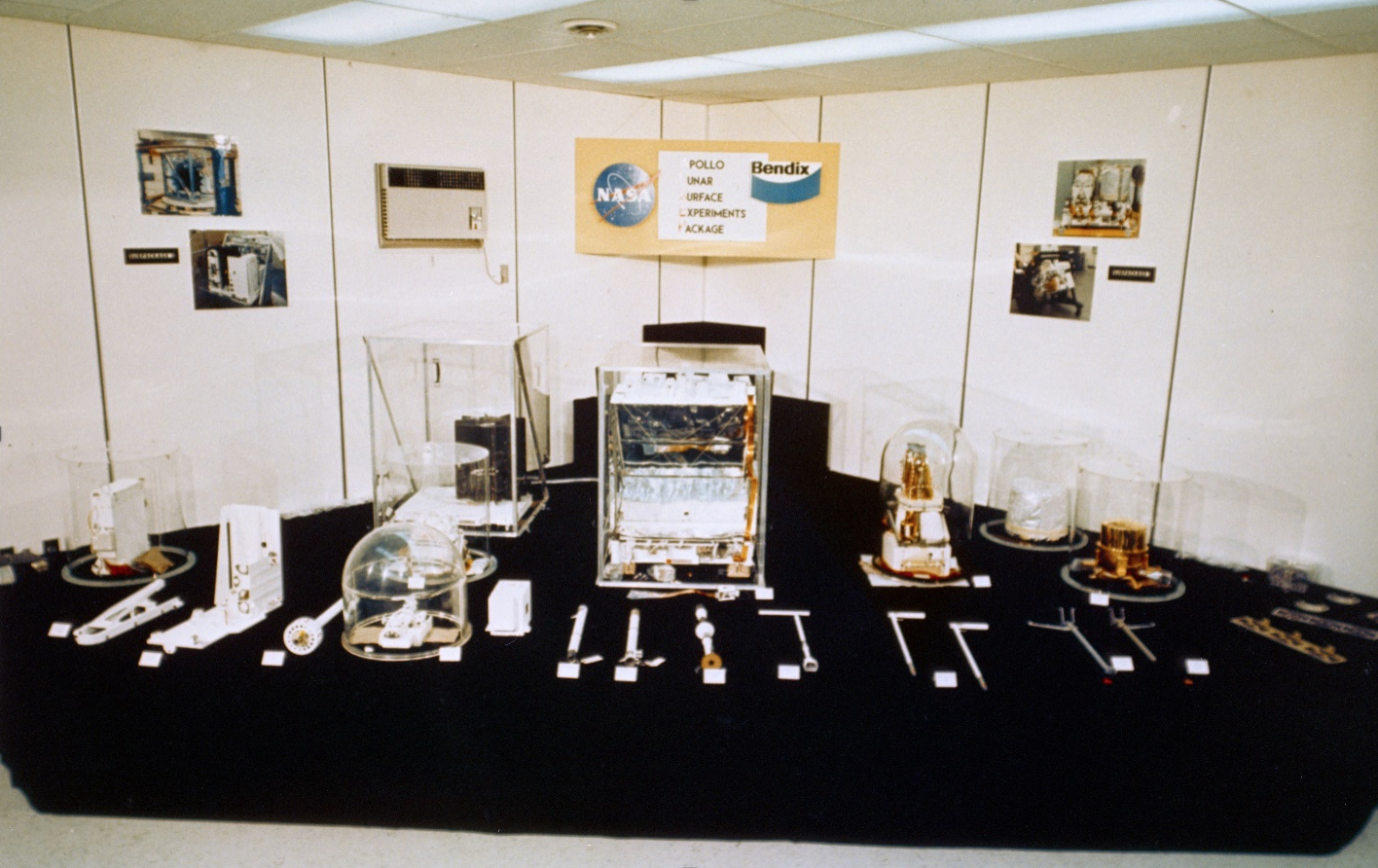When President John F. Kennedy announced his goal to “land a man on the Moon and return him safely to the Earth,” scientists began looking forward to the knowledge that would be gained during the lunar voyages. NASA scientists first conceived of the Apollo Lunar Surface Experiment Package (ALSEP) in 1963, a suite of experiments that promised maximum scientific return for minimum weight and complexity. Two years later, the National Academy of Sciences Space Science Board proposed 15 major areas for study, including lunar geology and seismology, from which NASA developed the specific experiments for ALSEP. In 1966, NASA approved the experiments and selected the Bendix Corporation of Ann Arbor, Michigan, to design, manufacture, test, and provide operational support for ALSEP.
On July 23, 1968, NASA formally accepted the first ALSEP flight system from the Bendix Corporation. Dr. Wilmot N. Hess, Director of Science and Applications at the Manned Spacecraft Center, now the Johnson Space Center in Houston, described the event as a “very significant step forward,” and the package as one of the most important set of experiments for lunar exploration. He added, “ALSEP is the first step toward learning the environment and interior of the moon.” The accepted ALSEP experiments were:
The Passive Seismic Experiment Package (PSEP) to record meteorite impacts and moonquakes, and was sensitive enough to record astronauts’ footsteps.
The Lunar Surface Magnetometer (LSM) to measure the variations of the lunar magnetic field.
The Solar Wind Spectrometer (SWS) to measure the energy, density, and direction and variations of travel of the particles emitted by the Sun.
The Suprathermal Ion Detector Experiment (SIDE) and the Cold Cathode Ion Gauge Experiment (CCGE) to measure the number and types of ions on the Moon.
A radio-isotope thermal generator (RTG) utilizing the heat from the decay of Plutonium-238 provided 70 watts of power to the experiments. This marked the first time a significant quantity of radio-isotope was carried on a human space flight mission.
For the first lunar landing, primarily due to limited crew time during the single surface spacewalk, NASA decided to fly a smaller package called the Early Apollo Surface Experiment Package (EASEP) consisting of only two experiments. The two EASEP experiments were the PSEP and the Laser Ranging Retro-Reflector, which contained an array of fused silica cubes arranged to reflect a laser beam precisely back to its point of origin on Earth to measure the Earth-Moon distance to an accuracy of eight centimeters. NASA later added two additional experiments to the first landing mission, the Lunar Dust Detector to measure the accumulation of dust on the lunar surface and the Solar Wind Composition Experiment, consisting of an aluminum foil panel to collect particles emitted by the Sun to determine their elemental composition. On each subsequent Apollo lunar mission, NASA flew a subset of the accepted ALSEP experiments, as well as additional experiments approved at later dates.
During their flight from Earth, the ALSEP and EASEP were stowed in the Scientific Equipment Bay of the Lunar Module’s (LM) Descent Stage. The crew manually retrieved the packages once on the lunar surface and deployed the experiments approximately 100 meters from the LM. Designed to operate for one year after the crew departed, most of the experiments operated far longer providing scientists with a wealth of new information about the Moon, its environment, and its interior.
Read Dr. Hess’ recollections in his oral history with the JSC History Office.
More details on ALSEP can be found at the NASA History Office home page.




























